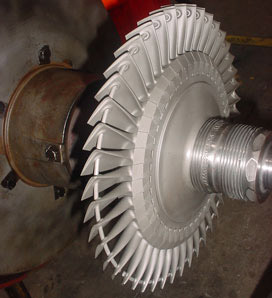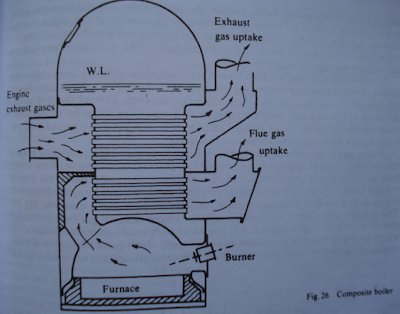Properties Of Marine Fuel
Density:
- This Is Described As The Weight Of A Unit Volume Of A Liquid.
- The Unit Is Kg/ M3.
- The Density Is Measured At A Standard Temp., Of 150c As It Varies With The Temp.
- If Density Is Taken At Different Temp., A Correction Factor Is Applied To Ascertain Correct Density At That Temp.
- Reciprocal Of Density Is Specific Volume.
- This Is Important Property For Estimation Of Bunker Capacity.
Viscosity:
- This Is Defined As The Resistance Of Fluids To Change Shape, Which Is Due To The Friction Between The Molecules Of A Fluid Producing A Frictional Drag.
- Absolute Dynamic Viscosity: This Is Defined As The Force Required To Shear A Plane Fluid Surface From Other Plane Surface, Over An Area Of 1sq. M. At The Rate Of 1m/Sec., When The Distance Between The Two Surfaces Is 1m. Absolute Viscosity Is Difficult To Ascertain And Therefore , Kinematic Viscosity Is Generally Used To Measure.
- Kinematic Viscosity: This Is The Ratio Of Absolute Viscosity To Density Of The Fluid At A Particular Tyemp. This Is Measured By Flow Of A Set Of Volume Of A Fluid At A Particular Temp., And Through A Specifically Calibrated Instrument. It Is Measured On The Basis I.E., Number Of Seconds For A Calibrated Instrument Like Redwood No.1, At 380c.
- Centistoke: This Is The Unit Used By International Standard And Measured At 500c. Higher Temperature At The Time Measurement Can Be Used For Viscous Fluids And Appropriate Corrections Can Be Made Later.
- Temperature Affects The Viscosity , Which Decreases With The Temperature Of The Liquid.
- Viscosity And Temp., Play A Vital Role While Selecting Oil For A Particular Service.
- For Best Results During Automisation Of Fuels Of High Viscosity, It Is Necessary To Heat The Fuel To Bring Down The Viscosity To About 30 Centistokes Or Still Lower At The Injector Point.
- Viscosity Of Diesel Oil Is 7centistoke At 380c.
- Viscosity Is Always Quoted At A Certain Temp., Without Which, It Has No Meaning.
Flash Point:
- This Is The Minimum Temperature At Which The Oil Begins To Give Out Flamable Vapours, Which Would Cause Momentary Ignition On Application Of Heat / Flame In A Specified Apparatus.
- The Test May Be Specified As ‘OPEN’ Or ‘CLOSED’ Depending On The Type Of Apparatus.
Fire Point:
- It Is The Minimum Temperature At Which The Vapours Given Out By The Heated Oil Are Sufficient To Ignite And Give Out More Vapours By The Heat So Produced, So That They Burn Continuosly.
- This Temp., Is Different From Flash Point And Is Higher By Anything Up To 400c.
Acidity (ALKALINITY):
- It Is Indicated By Neutralisation Number.
- The Number Is The Mass In Miligram Of An Alkali Required For Neutralising The Acid Present In 1gm Of The Sample.Neutralsation Number Can Also Be Expressed As Parts Per Million Per Ml Of Sample Of Oil.
- Total Base Number (TBN) Is Often Used For Alkalinity Indication Of Lubricating Oils.
Ash:
- This Is Expressed As Percentage By Mass Of The Original Sample Of Oil, Which Is Evaporated And Ignited Until All The Traces Of Carbon Have Disappeared
- The Ash Left After Above Process Contains Hard And Abrasive Minerals Such As Quartz, Silicates, Iron, Aluminium Oxides, Sand Etc.
Preparation Of Heavy Fuel Oil:
- Present Days Modern Marine Diesel Engines Are Run Continuosly On Heavy Fuel Oil Only
- The Main Purpose / Object Of Preparing The Heavy Fuel Oil For Use In Two Stroke Diesel And Four Stroke Engine Is To Remove The Impurities Like Water, Sludge, Catfines. Also To Heat The Fuel To Get The Correct Injection Viscosity As Recommended By Engine Manufacturer.
Preparation:
- After Receipt On Board Fuel Oil Is Stored In Bunker Tanks. In These Storage Tanks Fuel Is Heated To Just The Required temp To Keep It Pumpable.
- The Fuel Is Transferred From The Storage Tanks To The Settling Tank By Using A Transfer Pump. The Settling Tanks Are Normally Two In Number Having Capacity Of 24 Hours Use.
- In The Settling Tank Fuel Is Further Heated And Retained For As Long As Possible. In The Settling Tank Some Of The Heavier Solid Impurities And Water Get Separated By Gravity And Collect At The Bottom Of Tank. These Have To Drained Out Regularly.
- Heavy Fuel Oil Is Then Purified Further By Centrifuges. Centrifuges I.E., Purifiers And Clarifier Are Connected In Series. In Centrifuges The Impurities Such As Solid, Liquid And Sludge Are Removed Completely.
- In case Of Alfa Laval Purifiers Then By Using Alcap System The Oil Is Clarified And At Same Time Separated Water Is Removed From Bowl.
- Purified Oil Is Then Pumped To The Daily Service Tanks. From Daily Service Tank Oil Flows Through A Three Way Valve To A Mixing Tank.
- A Flow Meter Is Fitted In The System To Indicate The Fuel Consumption.
- A Mixing Tank Installed In Fuel Oil System Of Engine, Is Designed To Operate On Heavy Fuel Oil. The Purpose Is To Produce A Gradual Variation Of Fuel Quantity During Transition Period From Diesel Oil To Heavy Oil Or Vice Versa. The Supply Oil Changes In Viscosity And Temp., Progressively With This System. Mixing Tanks Has Proved To Be Useful For De gasification And Entrainment Of Air From The System. Mixing Tank Can Also Be Used As A Metering Tank. This Is Used To Collect Recirculated Oil And Also Acts As A Buffer Tank As It Will Supply Fuel Oil When Daily Service Tank Is Empty.
- Booster Pump Draw Fuel From Mixing Tank, Raises It’s Pressure And Passes Through The Heater. Oil Is Heated Up With Curresponding Reduction In Viscosity In Accordance With The Temperature – Viscosity Relationship.
- Controled Temperature By Viscosity Regulator Ensures Fuel Have A Viscosity Of Combustion Quality.
- A Pressure Control Valve Provides Constant Supply To Engine Driven Fuel Pump Ensuring High-Pressure Injection Supply Pressure.
- Pre-Warming Bypass Valve / Line Is Used To Heat Up The Fuel Before Starting The Engine.
- Service Tank Diesel Oil Are Connected To System Through A Three-Way Valve. The Engine Can Be Started And Manevier On Diesel Oil Or Even A Mixture Of Diesel Oil And Heavy Oil.
- Further The Sestem Include Various Safety Devices Viz., Low Level Alarms And Remotely Operated Tank Outlet Valves Viz., Quick Closing Valves, Which Can Be Closed From Outside The Engine Room In The Event Of Fire.
Importance Of Viscocity In Fuel Oil:
- Steady Values Of Viscosity Is To Be Maintained For Proper Atomization. Atomization Is Breaking Down Of Fuel Oil To Fine Droplets So That A Large Surface Of Oil Is Exposed To Heat And Oxidation.
- Low Viscosity Cause Too Fine Atomization And Thus Droplets Will Not Penetrate Deep Enough. This Will Cause Burning Close To Nozzle Tip. Because Of This Poor Combustion Nozzle Operation May Be Troublesome.
- On The Other Hand High Viscosity Cause Too Large Droplets Of Oil And Have Enough Energy To Strike Metallic Surface. This Will Lead To Overheating. This Also Create Problems In Functioning Of Centrifuges
Settling Tank
- The Fuel Is Transferred From Bunker Storage Tanks To The Settling Tanks Prior To Centrifuging, For Use In Diesel Engines And Also For Burning In Boilers.
- The Fuel Is Heated In Settling Tank And Retained There For As Long As Possible. The Settling Period Should Not Be Less Than 24 Hours For Optimum Separation Of Impurities.
- While The Fuel Is In Settling Tank Some Of The Solids, Sludge And Water Separates Out And Settle Down At The Bottom Of The Tank From Where They Can Be Drained Off Through The Drain Connections Which Must Be Of Self Closing Type.
- For Use In Diesel Engines, Only Purification By Settling Is Not Enough As Subsequent Centrifuging Is Carried Out To Separate The Impurities. Still Draining Of The Settling Tank Regularly Once In A Watch Is Recommended.
- High And Low Level Alarms Are Fitted On The Tanks.
- Fuel Oil Is Heated In The Settling Tank For Faster Separation Of Impurities, For This Reason Settling Tanks Are Provided With Heating Arrangement.
- The Rate Of Separation Of Impurities In Settling Tank Depends On Following Factors.
- Higher The Density Difference Between Oil And Other Impurities, Greater Will Be The Rate Of Separation.
- Bigger The Size Of The Impurity Particle Better Will Be The Rate Of Separation.
- Lower The Viscosity Of Oil, Better Will Be The Rate Of Separation.
- As Heating Results In Better Separation, The Fuel Is Generally Heated To A Minimum Temp., Of 500c Or To A Temp., About 700c.
- One Of The Solid Contaminats In The Fuel Oil Is A Cat (CATALYTIC) Fine, Having Density Of 2600 To 2800 Kg/M3 And Having Particle Size Of 10 To 50 Microns. These Compound Take Long Time To Settle Even When The Fuel Temp., Is Raised To 700c.
- An Ideal Settling Tank Should Have Inclined Bottom To Facilitate The Separation And Draining.
Safety Devices Fitted On Settling Tank;
Fuel Outlet Valve: This Is Remotely Operated Quick Closing Valve Fitted On The Settling Tank. It Is Arranged To Operate From Outside The Engine Room In Case Of Emergency.
Air Pipe: This Pipe Is Led To Above The Upper Deck Level And External To The Deck House. The Outlet Of This Pipe Is Fitted With Metallic Wire Gauge Screen Called Flame Trap To Prevent Fire Hazards.
Thermometer:This Is Used For Measuring The Temp., Of Oil
Sludge Valve / Cock: This Is Used For Draining Water And Sludge Collected At The Bottom Of The Tank. This Valve Must Be Self-Closing Type.
Over Flow Pipe: It Is Fitted At The Top Of The Tank And Led To An Over Tank In The Double Bottom. An Alarm Activated By An Over Flow Condition Is Sometime Fitted To The Tank.
Alarms: These Are Fitted To Warn High Fuel Temp., And Low Fuel Level.
Dumping Valve: This Valve Is Used In The Event Of Fire, To Dump The Oil To The Double Bottom Tank.
Quick Closing Valve: In Case Of Emergency To Stop The Engine, This Valve Cuts The Supply Of Oil To The Engine. The Arrangement Provided Outside The Engine Room To Close This Valve.
Sounding Valve: This Pipe Is Provided To Take Sounding Of The Tank For Checking Fuel Level.
Author Amit
Air Pipe: This Pipe Is Led To Above The Upper Deck Level And External To The Deck House. The Outlet Of This Pipe Is Fitted With Metallic Wire Gauge Screen Called Flame Trap To Prevent Fire Hazards.
Thermometer:This Is Used For Measuring The Temp., Of Oil
Sludge Valve / Cock: This Is Used For Draining Water And Sludge Collected At The Bottom Of The Tank. This Valve Must Be Self-Closing Type.
Over Flow Pipe: It Is Fitted At The Top Of The Tank And Led To An Over Tank In The Double Bottom. An Alarm Activated By An Over Flow Condition Is Sometime Fitted To The Tank.
Alarms: These Are Fitted To Warn High Fuel Temp., And Low Fuel Level.
Dumping Valve: This Valve Is Used In The Event Of Fire, To Dump The Oil To The Double Bottom Tank.
Quick Closing Valve: In Case Of Emergency To Stop The Engine, This Valve Cuts The Supply Of Oil To The Engine. The Arrangement Provided Outside The Engine Room To Close This Valve.
Sounding Valve: This Pipe Is Provided To Take Sounding Of The Tank For Checking Fuel Level.
Author Amit




























































